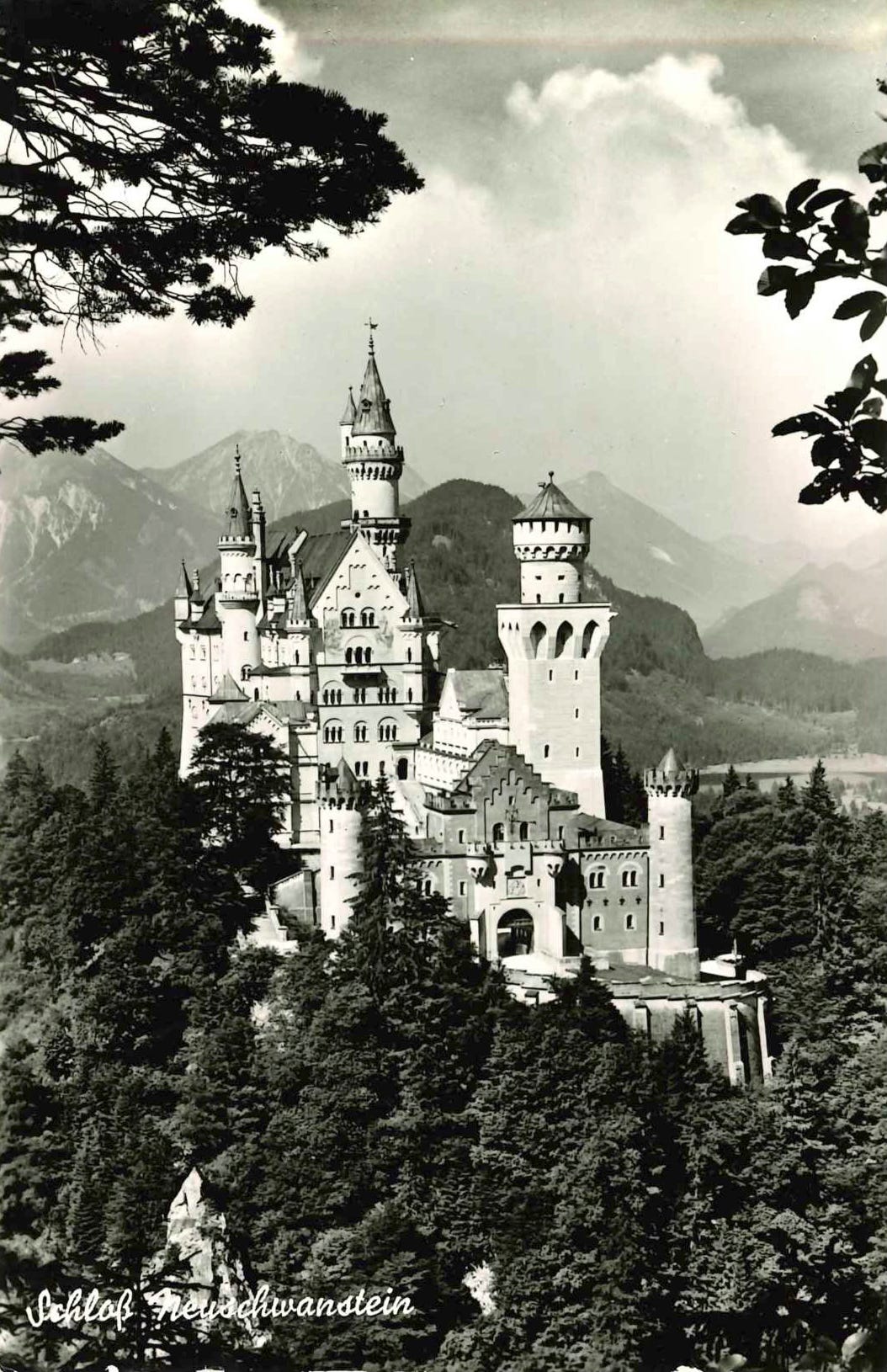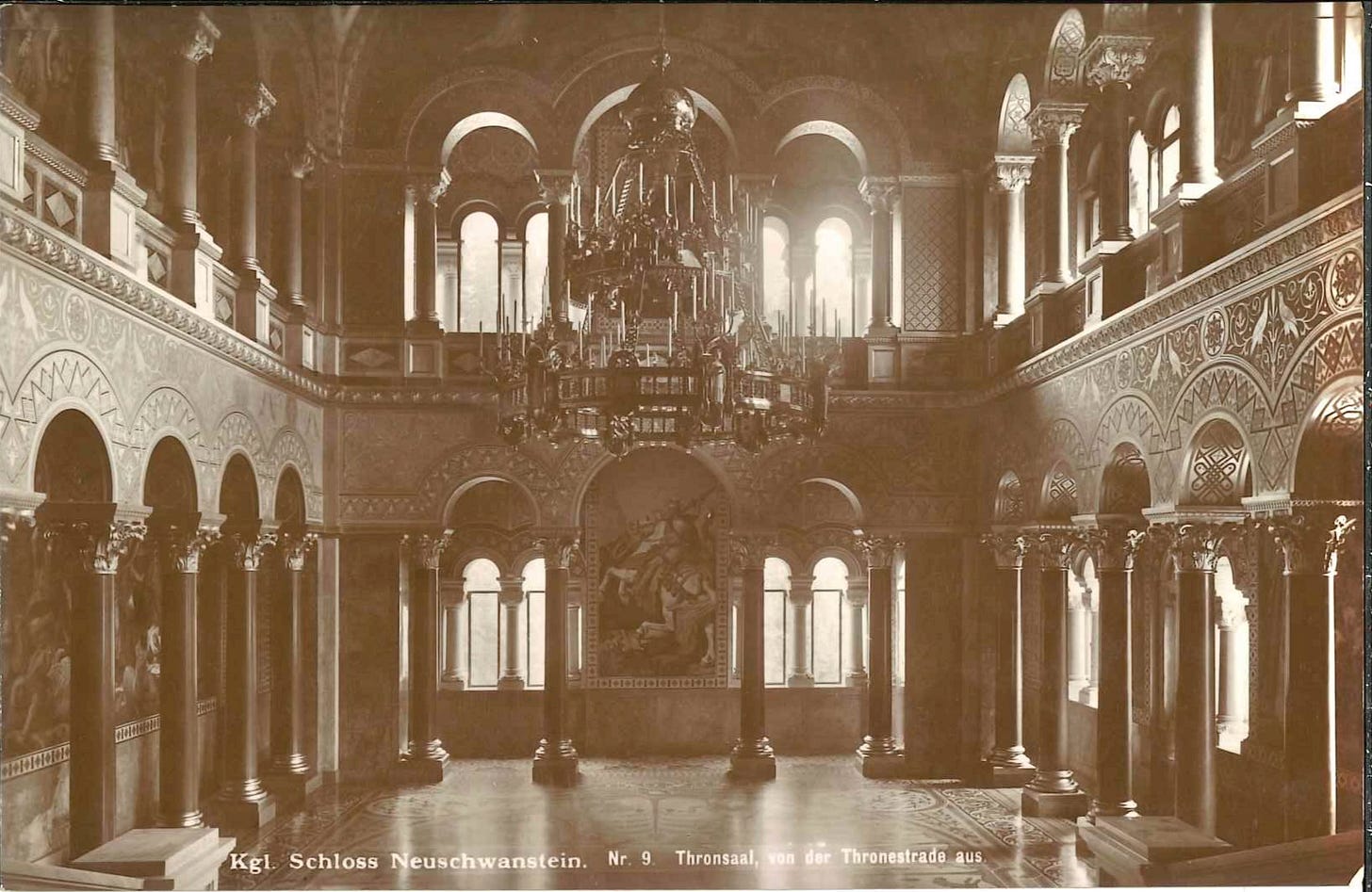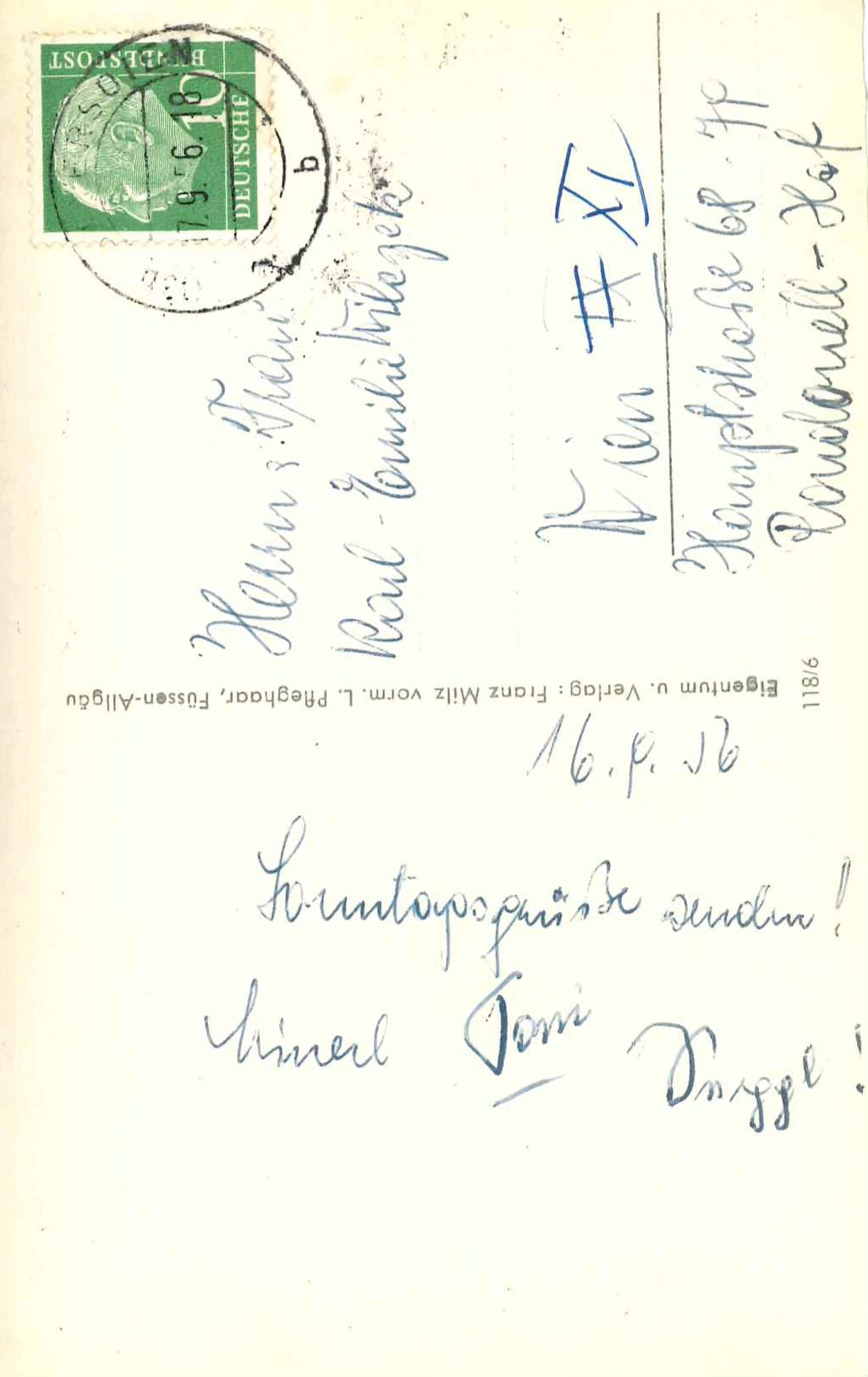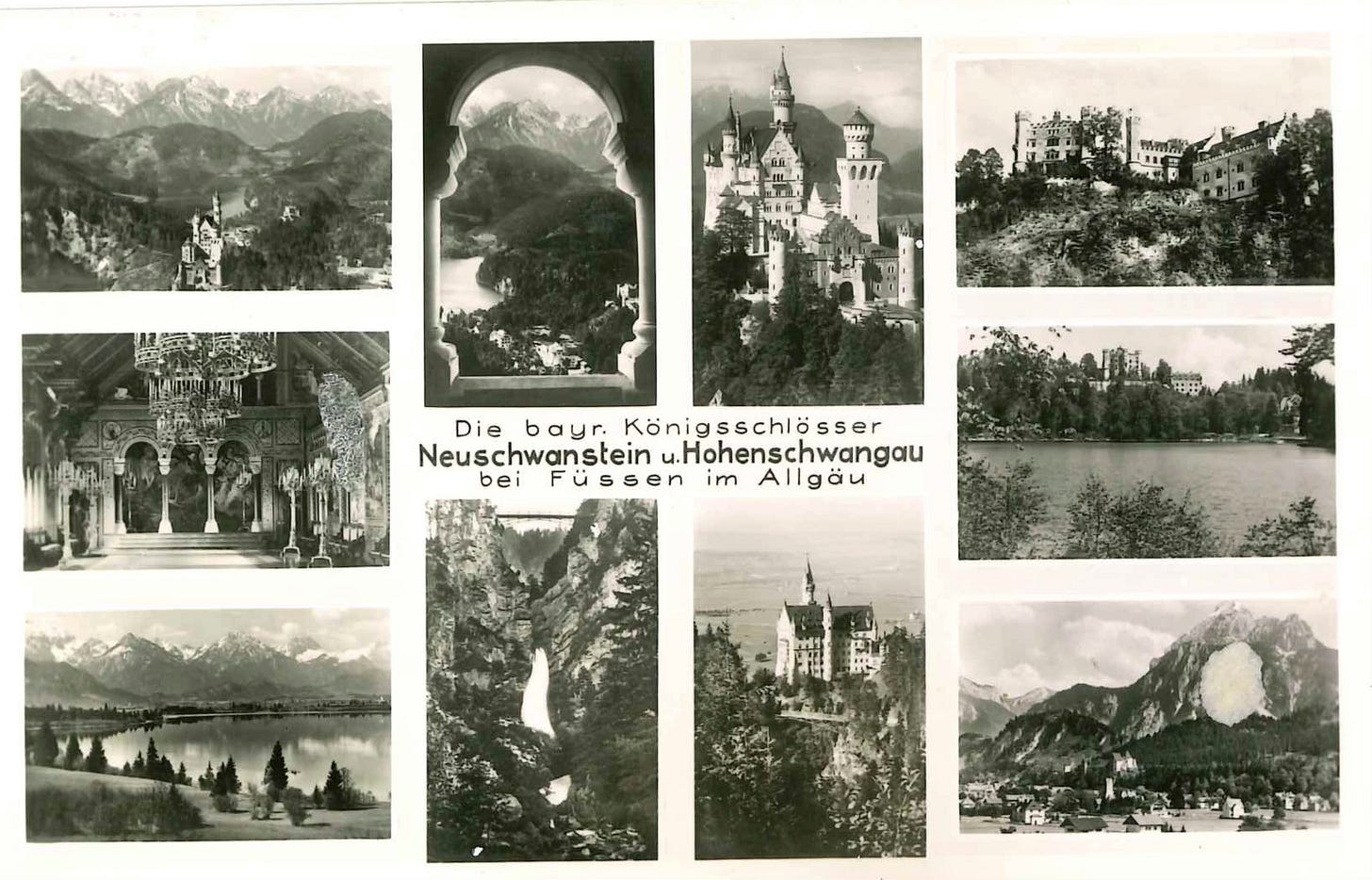Neuschwanstein Castle
Come and visit the "fairy-tale" castle of Bavaria's truly "mad" king, Ludwig II
A few weeks ago, I read a wonderful little essay about the “fairy-tale” castle of Neuschwanstein. Penned by the content creator by the pen name Culture Critic, I highly recommend his weblog:
Here are a few choice quotes from the above-linked post to set the stage:
Though Ludwig [II of Bavaria, r. 1864-86] built several castles, his palace at Neuschwanstein (literally, “New Swan Stone”) was truly worthy of a fairytale. Not only is it remarkably designed exteriorly, taking advantage of Bavaria’s most stunning views, but the interior is even more exquisite — a fantasia of beautiful paintings and stunning feats of architectural imagination…
While Ludwig seemed to stand against the industrial age, he also innovated technological changes in Bavaria. He built Neuschwanstein with central heating, an electric bell system for servants, and even automatic flush toilets.
In many ways, Neuschwanstein Castle exemplifies the best of culture: it engages the imagination and connects visitors with the best that past eras have to offer, while simultaneously integrating the most useful advancements of contemporary life.
So, what did I do upon reading this piece? I went to my postcard boxes and looked for images. Lo and behold, here are a few of them, again, first in black-and-white and, in a second posting, in full colour. Please join me on this trip to Bavaria.
Neuschwanstein and its Scenery
Although undated, I suppose the above postcard is from after the Second World War, and it includes the names and elevation of some of the higher mountain peaks.
The above postcard was mailed in the late 1960s by my grand-aunt (to her father). Note that this is more or less the pictorial canon of the site, which does not change during the 20th century.
The same point of view also comes in this format, as the above and below specimen show (both were mailed in the 1960s, it would seem):
Inside Neuschwanstein Castle
This is, again, from the above-linked weblog:
Ludwig’s castle drew inspiration from medieval German palaces, Norse and Germanic mythology, and even Byzantine design. He covered the walls with scenes from Wagner’s operas and the legends that inspired them, including Lohengrin, Parzifal, and the Holy Grail…
Above, the “throne hall” is shown, in one of the oldest postcards I have; although undated, its reverse indicates it is from before the First World War.
One of the castle’s most stunning features is an artificial cave, a grotto in which the Ludwig could take refuge from the pressures of royal life and find solace in the natural world. Complete with an artificial waterfall, this of course takes inspiration from another German folk legend, that of Tannhäuser (also immortalized by Wagner in his opera of the same name).
Above, Ludwig II’s bedroom is shown (go to Culture Critic’s posting for a colour photograph), most likely from before the First World War, too.
Against the Pictorial Canon
One of the strangest images I’ve found is the one below—it shows Neuschwanstein from a distinctively different perspective:
It was mailed in 1918, and when seen from this particular point of view—unlike the one that is commonly shown (as in the first couple of postcards), Neuschwanstein’s imposing architecture appears perhaps a tad less like a “fairy-tale” and more proportionate, architecturally speaking.
In this multi-picture postcard from the 1950s or 1960s, many “odd” views of Neuschwanstein are found, too, which are sights not commonly seen if you look for the castle online:
Brightly coloured postcards of Neuschwanstein are up next—stay tuned!












Haut-Koenigsbourg in Alsace is another crazy made-up "mediaeval" castle.
In 2021, it was hard to get there (because one bridge was closed due to renovation), and almost impossible to get inside (due to stupid Covid restrictions).
https://www.file-upload.net/download-15378710/20210803_115648.jpg.html